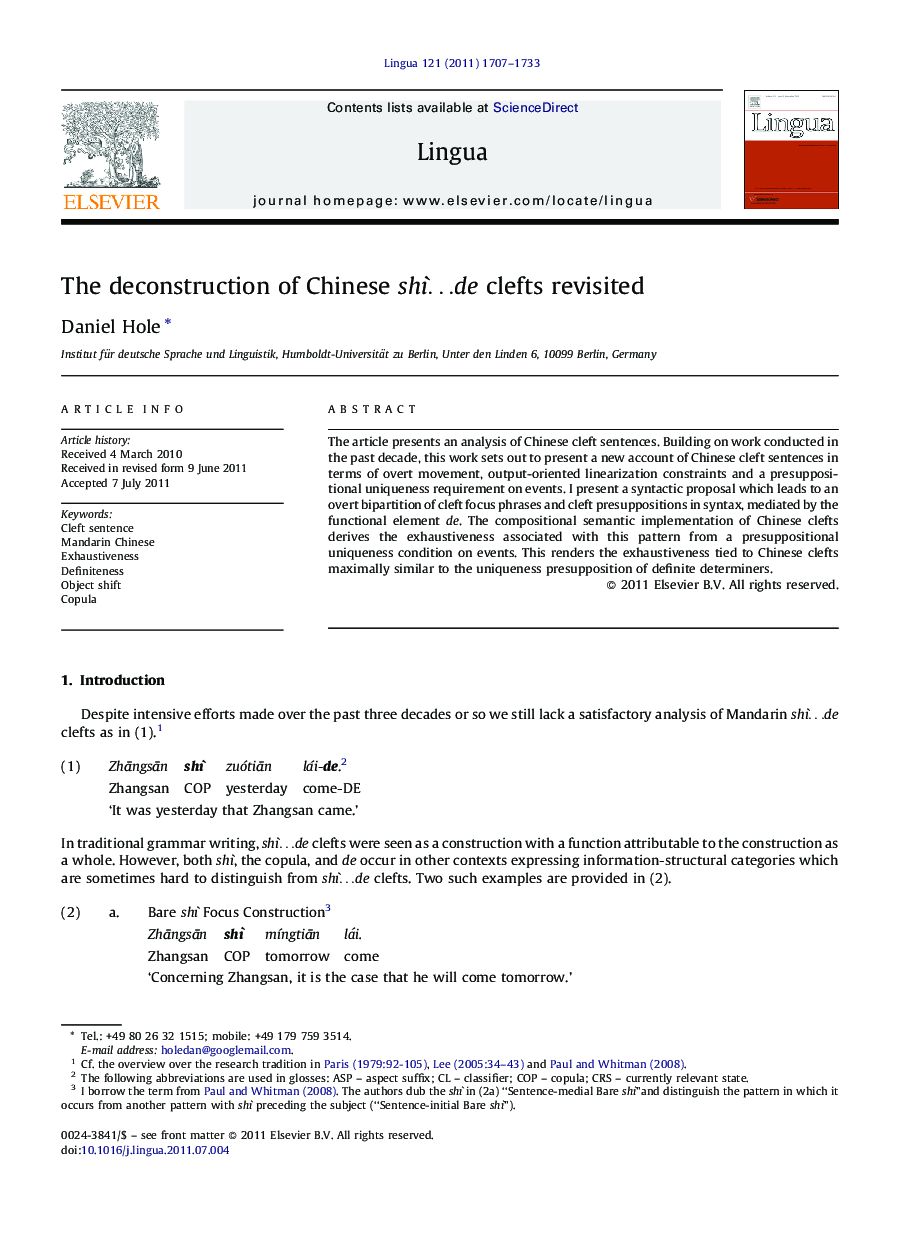| Article ID | Journal | Published Year | Pages | File Type |
|---|---|---|---|---|
| 936184 | Lingua | 2011 | 27 Pages |
The article presents an analysis of Chinese cleft sentences. Building on work conducted in the past decade, this work sets out to present a new account of Chinese cleft sentences in terms of overt movement, output-oriented linearization constraints and a presuppositional uniqueness requirement on events. I present a syntactic proposal which leads to an overt bipartition of cleft focus phrases and cleft presuppositions in syntax, mediated by the functional element de. The compositional semantic implementation of Chinese clefts derives the exhaustiveness associated with this pattern from a presuppositional uniqueness condition on events. This renders the exhaustiveness tied to Chinese clefts maximally similar to the uniqueness presupposition of definite determiners.
► Chinese clefts oppose a clefted constituent and a cleft presupposition in the overt syntax. ► Chinese clefts are built around the functional element de. ► A subtype of clefts in Chinese involves object shift. ► The correct surface linearization of Chinese clefts requires output-oriented linearization constraints. ► The exhaustiveness of Chinese clefts is rooted in a presupposition largely parallel to that of definite articles.
